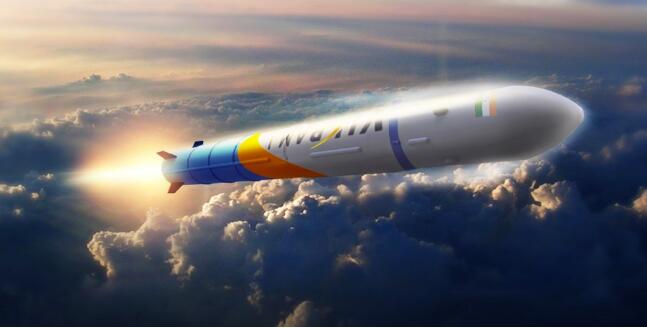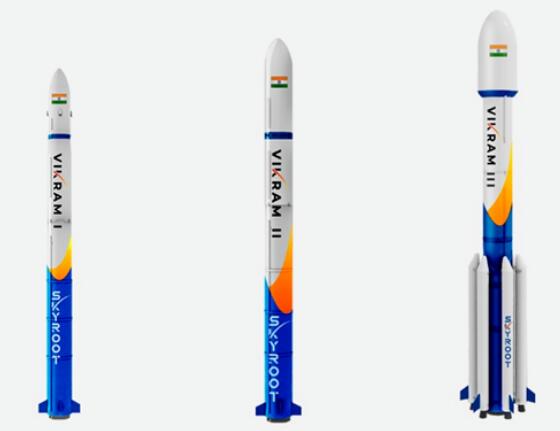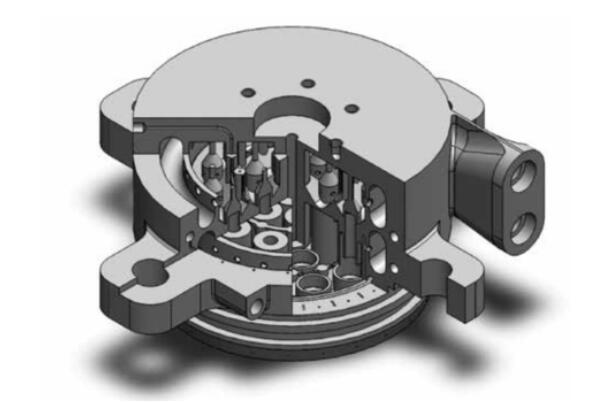Since SpaceX’s debut, the private space launch industry has greatly expanded, but certain markets (such as India) are only now receiving regulatory support. Now these barriers are gradually being removed, and Indian private launch startup Skyroot is leaping to become the country’s first private launch. A space launch vehicle manufacturer, and has made significant technological progress through a new successful upper-level engine combustion test. Recently, Skyroot successfully tested the belt with 100%3D printingThe rocket engine of the fuel injector, the rocket engine is configured on its Vikram I launch vehicle.
![]() 3D printingHelp start private aviation
3D printingHelp start private aviation
It is reported that Skyroot was established two years ago. Its team is composed of rocket engineers who previously worked for the Indian Space Research Organization (ISRO). So far, the startup has raised $4.3 million, including from space and defense. The financing of contractor Solar Industries is currently undergoing a re-financing process, and plans to obtain another $15 million in investment by 2021.
![]() 3D printingBuild a competitive advantage
3D printingBuild a competitive advantage
In terms of technology, Skyroot is currently focusing on developing its first Vikram I launch vehicle,3D printingIt is also a key part of Skyroot’s overall rocket manufacturing technology. Skyroot said it passed3D printingTechnology can reduce the quality of the engine by 50%, reduce the parts required for its construction, and shorten the delivery time of its production by 80%. Skyroot’s next step will be to test launch two complete phases of the rocket under development. The company is also developing next-generation launch vehicles Vikram-2 and Vikram-3. These launch vehicles will be launched between 2022 and 2023. Come out at this point in time, and is cost-competitive with the larger existing carpool rockets.
Skyroot full range of engines
This engine called “Raman” can send multiple satellites into orbit. The Raman engine is powered by UDMH and NTO liquid fuel. The engine combination composed of 4 engines produces 3.4kN thrust. The Raman engine is the last stage of the four-stage rocket Vikram I. VikramI will be powered by a 3-stage solid fuel engine, and the last stage tested so far is a liquid fuel engine. This is the first 100% in India3D printingDual propellant liquid rocket engine injector. Compared with traditional manufacturing, the engine can be restarted multiple times, allowing them to insert various satellites into multiple orbits in a single mission.
About passing3D printingTechnical Manufacturing3D printingSyringe, in addition to the metal, Skyroot is still there3D printingSpecial materials are used in the process, Skyroot looks forward to3D printingApplied to the Vikram-2 rocket. Skyroot has developed internal software for launch vehicle guidance, navigation and control functions, and is currently testing the onboard avionics module. Skyroot’s goal is that its first launch vehicle will be launched in December 2021. The satellite is inserted into space.
![]() Oil and gas mixing,3D printingTo solve
Oil and gas mixing,3D printingTo solve
In terms of liquid oxygen/kerosene engine injector components, as early as 2018, the German Space Center DLR and 3D Systems Customer Innovation Center CIC designed a3D printingInjector, in order to achieve new performance. The injector of a rocket engine is the part where fuel and oxidant enter the combustion chamber. Successful liquid rocket fuel injectors push the components in a specific way, ensuring their atomization and proper mixing, to produce the combustion required for a mobile rocket.By using metal3D printing, The Aerospace Center can completely change the design method of coaxial jets without multiple components, significantly reducing production time and costs. Reducing the number of parts from 30 to 1 helps to reduce the final weight by 10%, and eliminates the known failure points at the fastening, which is beneficial to reduce related quality control measures and improve system performance.
The final part of the rocket injector of the German Space Center is printed by 3D Systems’ metal printer ProX DMP 320. The material used is LaserForm® Ni718 (A), an oxidation- and corrosion-resistant Inconel. This material has good tensile strength, fatigue resistance, creep resistance and long-lasting strength, even if the temperature reaches 700˚c, it is an ideal choice for high-temperature applications.Metal3D printingHelp the aerospace center to use coaxial injection technology and dual swirl injector elements to optimize the oxidant and fuel mixing in the injection head. Two different cooling schemes are used, each of which uses a thin channel with a minimum feature size of 0.2 mm and a maximum length/diameter ratio of 45. The design also integrates the filming characteristics of the jet head, allowing engineers to directly adjust the film mass flow rate at the injector.
The Aerospace Center directly integrates the coolant distribution system with the ejector to improve performance. Engineers can implement and independently control wall perspiration and film cooling technology. When used in an ejector, a coolant film is formed on the hot side of the combustion chamber to protect the wall structure from high heat flux. This system is considered to be easier to manufacture and economical than traditional regenerative cooling. Combined with complex ceramic materials such as ceramic fiber matrix composites (CMCS), the design and manufacturing methods developed by the Aerospace Center and 3D Systems may support the repeated use of structures and systems developed for jet heads and transfer of technology to In other applications.To simplify understanding3D printingIn the application logic of power parts, the development requirements of power equipment can be summarized as bright spots: strong explosive power and high safety.and3D printingThe freedom of design and manufacturing is released, and the kinetic energy of power equipment is improved by optimizing the mixing ratio of fuel and air; on the other hand, through3D printingThe cooling channel or copper metal improves the fast heat dissipation performance of power equipment and obtains higher safety.
The injector mentioned in this article is just using3D printingAchieve the characteristics of complex design, the achievement of a more robust rocket engine.
(Editor in charge: admin)





0 Comments for “India’s Skyroot tests rocket engines with 100% 3D printed injectors”